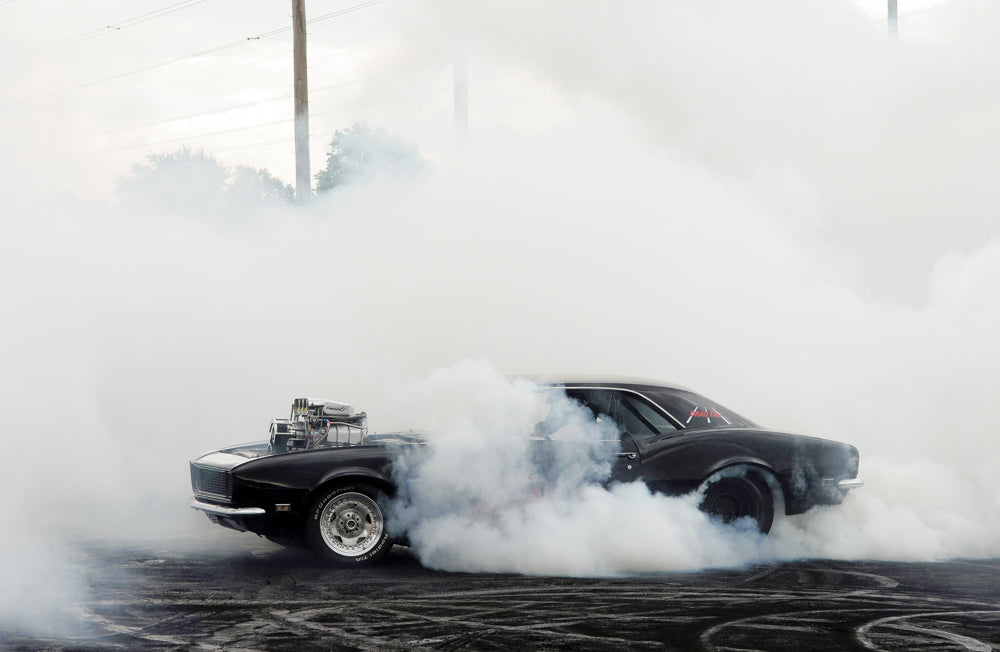
Super Charged
SUPER CHARGED

In drag racing the spectacle starts before the checkered flag is even dropped. Drivers spin their slicks while keeping their cars stationary to gain traction off the starting line. This smoky tactic is called a burnout, and in certain parts of the world, it’s become its own pseudo-sport — an exhilarating and impossibly loud demonstration of an engine’s true potential. In Australia, in particular, burnouts have been elevated from a backyard bogan pastime to performance art, with prize money awarded to cars that play best to the crowd. For the past 13 years, Simon Davidson has been following and documenting the scene.
Six-foot-five with two heavily tatted arms — one of which is bandaged from a recent crash — Davidson seems well suited to the task. “My daily driver is a 1960 Ford Falcon with a Mustang 289 in it. Nothing too head-deep, but she’s got the right proportions: 2 doors and 8 cylinders,” he says. He’s been driving muscle cars since the ’80s, but only began chronicling the burnout scene back in 2001, when a friend took him to a drag race.

“It was the people that got me into it at first. The guys I photographed in their cars had character,” he says. “The burnout competitions were a real subculture back then, and in many ways still are.”
Along Australia’s densely developed coastline the law considers burnouts a serious problem. In some states, if you’re caught in the act, the police can confiscate your ride and crush it. Simon regularly drives hundreds of miles into the country to find underground competitions, which often take place in large machinery garages or on slabs of pavement on private property.

Fire was not yet the star of the show when Davidson started shooting burnout competitions, but as the scene expanded, “people began putting real money into it and building these monster engines and using new accelerants,” he says. “Guys were running 1,200 horsepower motors on methanol. The excess fuel collects in the exhaust, and when the tires get down to their steel belts they spark and ignite the methanol. It’s amazing how well metal and paint can flame up. The crowd loves it. It’s why half of them turn up.”
Amidst all that sound and smoke, Davidson picks up his camera. “There’s a lot of preparation to get the shot, so I don’t have to hope. I hunt, and I hunt hard. Sometimes people will look at the photos, see the flames and smoke and go, ‘Is that real?’”

Some years ago, Japanese drifters and stuntmen invented a technique to change the color of tire smoke, which quickly spread to the burnout scene. The drivers embed the same dye that’s used in military smoke grenades into the rubber of their tires, so that instead of ash gray clouds, they spew roiling plumes of rose pink and powdery blue.
“Guys who restore show cars think it’s mad,” he says. “Mechanics wonder why you’d want to put all that stress on an engine for 60 seconds and not go anywhere.” Of course, anyone who’s ever stomped on an accelerator and turned rubber into atoms knows the answer.



